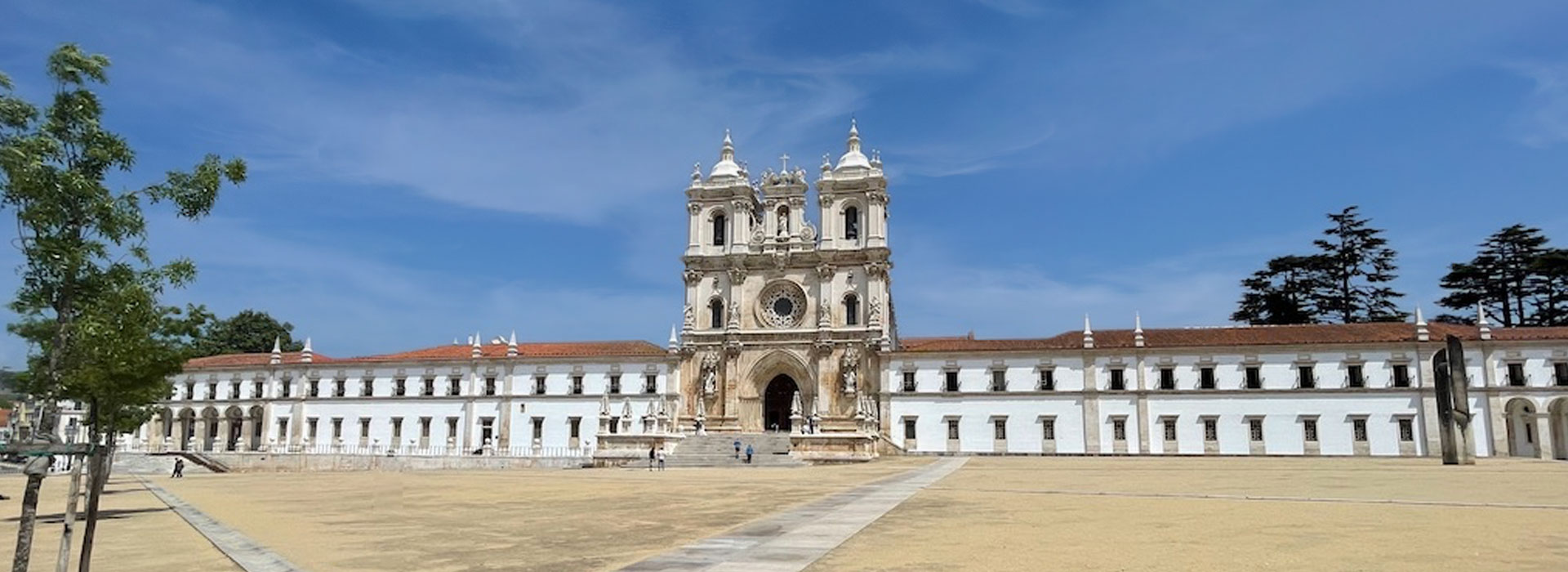
Situated 120km (75 miles) north of Sintra, in the heart of Portugal, Alcobaça is a delightful town renowned for its captivating history, cultural heritage, and delectable cuisine. At its centre stands the majestic Alcobaça Monastery, a UNESCO World Heritage Site and one of Portugal’s most significant Gothic landmarks. Dating from 1153, the cathedral’s grandeur and solemn beauty make it a popular excursion for daytrippers.
Beyond its iconic monastery, Alcobaça invites travellers to wander its tranquil streets, discovering a blend of traditional Portuguese life and lively local culture. The town is perfectly situated for exploring the broader region, with nearby highlights, including the medieval town of Óbidos, the coastal charm of Nazaré, and the spiritual allure of Fátima, all within easy reach.
Alcobaça is also celebrated for its culinary delights. The region’s sweets, such as the famed Trouxas de ovos and Pão de ló, tempt the taste buds, while traditional dishes like roasted pork (Leitão) showcase Portugal’s rustic flavours. Whether you’re drawn by the historic allure of its cathedral, the picturesque setting, or simply the delicious food, MADABOUTSINTRA.COM stands ready to enhance your visit. Our comprehensive guide furnishes vital insights into nearby attractions, lodging options, and dining suggestions. With our free cancellation options for hotel bookings, travellers can plan with peace of mind. Furthermore, we extend travel guidance to facilitate a smooth and hassle-free journey.
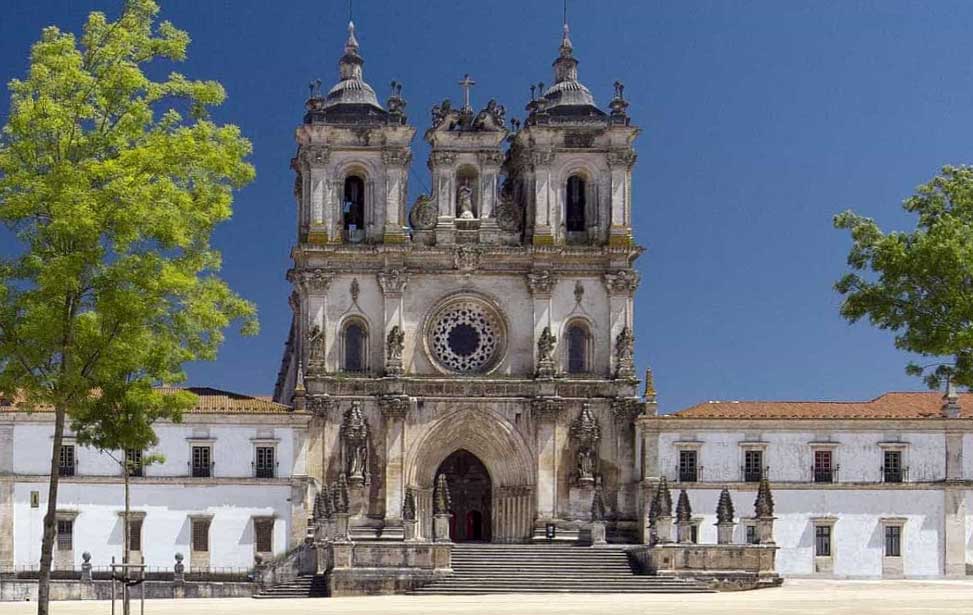
Alcobaça's Gothic Façade
Dating back to 1153, the Royal Abbey of Santa Maria stands as a premier specimen of early Gothic architecture across Europe. Its inception traces back to the decree of Afonso Henriques, Portugal's inaugural king, following his triumph over the Moors during the Christian Crusades in central Iberia. Under the stewardship of King Afonso Henriques, Abbot Bernard of Clairvaux, the esteemed founder of the Cistercian Order, spearheaded the monastery's construction in 1178 AD. Drawing inspiration from the Abbey of Claraval, the primary church of the Cistercian Order in France, the monastery's design emerged.
The edifice represents Portugal's maiden venture into Gothic church architecture, with only remnants, like the Gothic portico and the rose window, surviving today. Substantial modifications during the 17th and 18th centuries saw the addition of twin bell towers, reshaping the façade. Flanking the portico, statues pay homage to São Bento and São Bernardo, embodying the monastery's enduring legacy.
Upon stepping into the church, visitors are immediately captivated by the grandeur of the central nave. Its unadorned simplicity exudes a lofty magnificence, characteristic of the Gothic style. Designed in the shape of a Latin cross, the church features a soaring ceiling, with lateral aisles matching the height of the central nave, imparting a sense of opulence and awe. Remarkably, even after eight centuries, it remains Portugal's largest church.
Within the transept, visitors will discover the tombs of the legendary couple, Dom Pedro and Dona Inés. Facing each other, these intricately adorned tombs depict the eternal bond of these famous lovers, their effigies reclining in regal splendour. Inscribed with the phrase "Até ao fim do mundo" (Until the end of the world), they serve as a poignant testament to their enduring love. Exploring the church, which takes approximately 20 minutes, is free of charge. Accessing the Sacristy involves passing through an ornate Manueline doorway and traversing a corridor adorned with ribbed vaulting, rebuilt after the 1755 earthquake.
The Reliquary Chapel, housed within the New Sacristy, stands as a testament to exquisite beauty, earning the moniker "Mirror of Heaven." Constructed under the supervision of Abbot Constantino de Sampaio from 1669 to 1672, its octagonal layout is resplendently embellished with gilded wood carvings, illuminated by natural light filtering through skylights in the cupola ceiling.
Adjacent to the church's entrance is the Hall of Kings (Sala dos Reis), functioning as the monastery's ticket office. Dating back to the 17th century, the room boasts azulejo tiles depicting historical events, including the siege of Santarém and the founding of the monastery. Adorning the walls are statues crafted by resident monks, representing nearly every king of Portugal up to Dom José, who passed away in 1777.
Alcobaça Monastery is where eternal love is celebrated, as it is the resting place of Pedro and Inês. Pedro was a prince whose lover was brutally assassinated for political reasons. When he became King, he made sure justice was served: he had the assassins killed (legend has it their hearts were taken out to make them pay for his broken heart…) and his beloved Inês was crowned Queen of Portugal… after her death.
An excellent, friendly and knowledgeable guide will welcome you at the main entrance and tell you all about the history and daily life of this ancient monastery, one of the largest of all Cistercian centres in Europe. “Pray and Work” was the motto of the monks, who also left something of a profound legacy: pastry and ganjah. You’ll thank us later.
Disclaimer: tickets are sold and handled via well-established 3rd party tour agents madaboutsintra.com are affiliated. This means we receive a small commission from our partners at no extra cost when you purchase through a link. This helps to cover running costs, and keep our passion alive.
The monastic structures at Alcobaça were erected shortly after the completion of the church, embodying the Cistercian principle of simplicity. Visitors can delve into the monk's austere way of life for a nominal entrance fee. At the heart of the monastery lies the Claustro de Dom Dinis, or King Dinis Cloister, believed to have been constructed between 1308 and 1311 during the reign of King Dinis. These cloisters, one of five sets, were designed by Domingo Domingues and Master Diogo. Revered as the "Cloister of Silence," they served as a space for meditative contemplation.
The lower level of the cloister exemplifies medieval architectural mastery, with slender columns gracefully intertwining around buttresses, forming elegant arches crowned by rosettes. An upper floor, crafted by Diogo and João de Castilho during Manuel I's reign (1495-1521), was later added. Adjacent to the cloisters lies the Gothic Fountain Hall, showcasing a splendid early Renaissance water basin adorned with intricate motifs and the monastery's coat-of-arms.
In the 17th century, the original kitchens were replaced by the Afonso VI Cloister, featuring a Romanesque door as the sole relic of its predecessor. The new kitchen, boasting an impressive 18-metre chimney supported by eight pillars, was equipped to roast an entire ox. Adorned with glazed tiles, the opulent kitchen contrasts starkly with the monk's humble living quarters.
Adjacent to the kitchens stands the Refectory, a vast vaulted chamber where monks dined in silence. An arched staircase in the western wall leads to a picturesque pulpit, where passages from the Bible were recited to aid digestion.
The dormitory, resembling a cavernous gothic vaulted hall, provided sleeping quarters for monks, with the abbot occupying his own private quarters. In the 1930s, partitions separating individual cells in the dormitory were removed to create a more communal space.
The Chapter House served as the assembly point for daily monastic matters, with discussions initiated by readings from the Rule of St. Benedict. Accessible through a Romanesque portal, the room now hosts baroque statues sculpted by monks for the church's main chapel.
Low Season: 09h30 - 18h00, High Season: 09h30 - 19h00.
Adult: €6.00, Combined Ticket:
Alcobaça, Batalha, Convento de Cristo: €15.00, Concessionary: €3.00, Child under 12: FREE, Sundays up to 14h00: FREE.
![]() Lisbon Card: FREE
Lisbon Card: FREE
Contact Details
Mosteiro de Alcobaça, 2460-018, Alcobaça, Portugal.
39° 32' 54.2"N | 08° 58' 48.2"W | +351 262 505 120 | mosteiro.alcobaca@igespar.pt
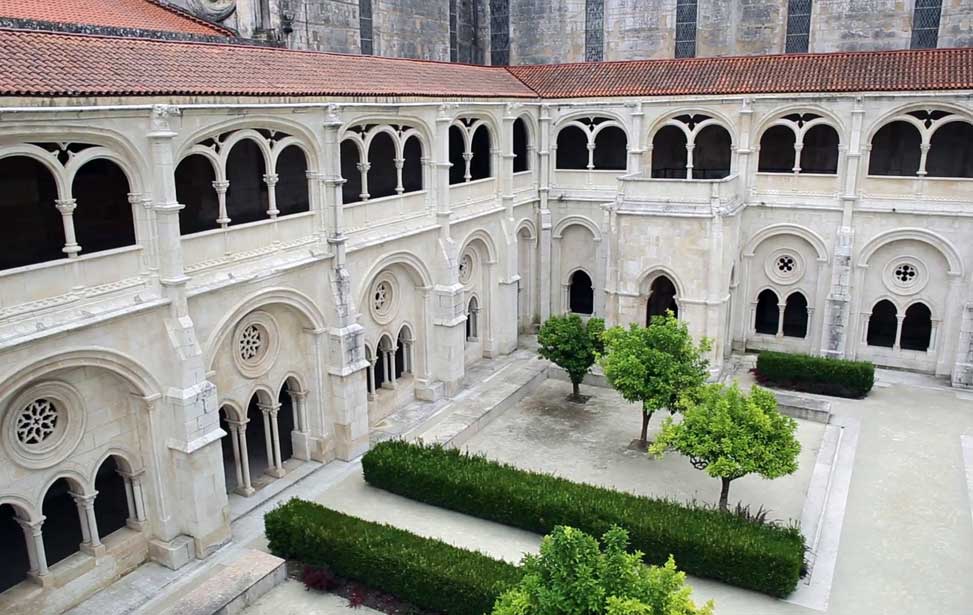
King's Cloisters

Alcobaça's Refectory
|
There are plenty of various types of eateries in close proximity of the Monastery. | |
|
There are public toilets outside the Monastery. | |
|
There is free car parking right side of the monastery (facing it). | |
|
The Monastery has access ramps to the ground floor for persons with reduced mobility, enabling them to visit the Monks' Room, King Dinis Cloister, Chapter House, Refectory, Kitchen and Church. Access to the Monastery for people in wheelchairs is through a side door at Praça Afonso Henriques, which provides direct access to the Monks' Room. Please inform the Monastery reception desk for reduced mobility access or book in advance. |
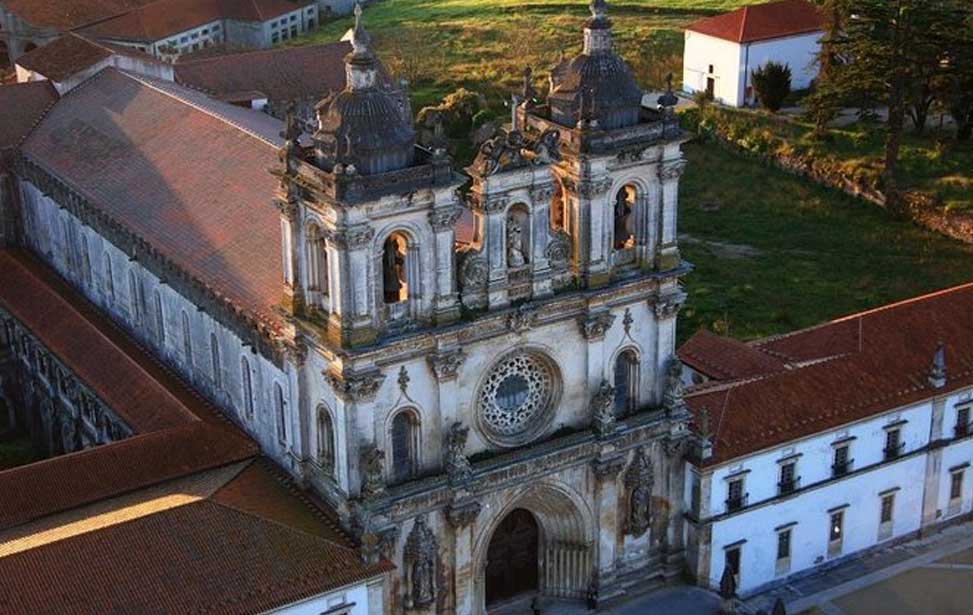
Explore two UNESCO World Heritage Sites on a private full-day tour from Lisbon. Visit the Convento da Ordem de Cristo and the Monastery of Alcobaça, uncovering the history of the Knights Templar and Portugal's religious architecture dating back to the 12th century. This 8-hour tour includes hotel or cruise port pickup and drop-off, plus transport in a climate-controlled minivan. Enjoy a flexible, personalized experience while discovering the UNESCO-listed sites with an expert guide. Perfect for history enthusiasts visiting Lisbon.
(4) | 8 Hr | ✔ Free Cancellation
Check Availability
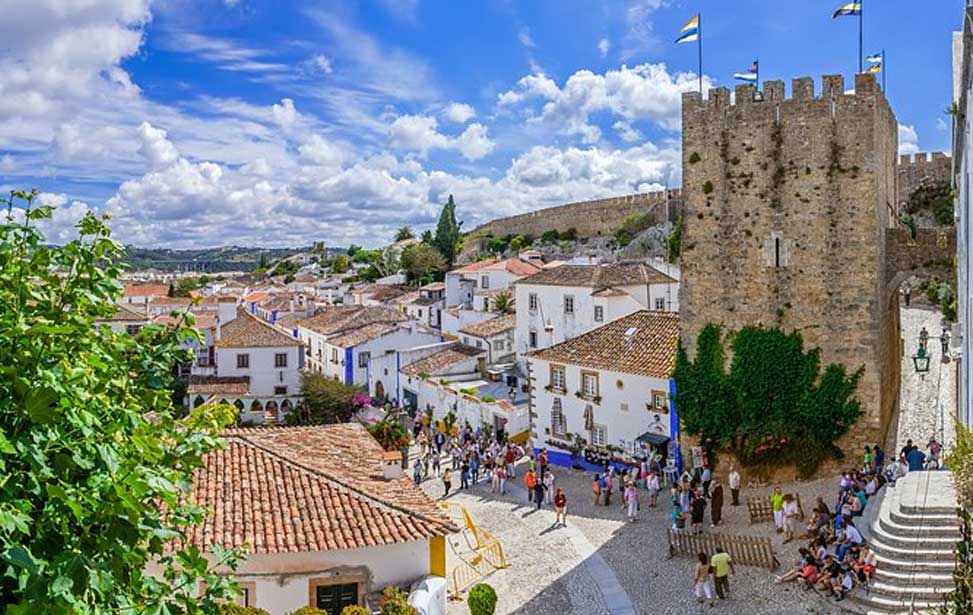
Embark on an exciting full-day private tour from Lisbon to discover the religious sites and charming towns of central Portugal. Your knowledgeable guide will take you to explore the sanctuaries and monasteries of Fátima, Batalha, Alcobaça, and Nazaré, and provide in-depth insight into the history and architecture of each location. Afterward, you'll have the opportunity to savor the delightful taste of 'ginjinha' and admire the medieval castle in the picturesque town of Óbidos before returning to Lisbon. With the option to customise your itinerary, you can enjoy a personalised experience tailored to your preferences.
(14) | 10 Hr | ✔ Free Cancellation
Check Availability
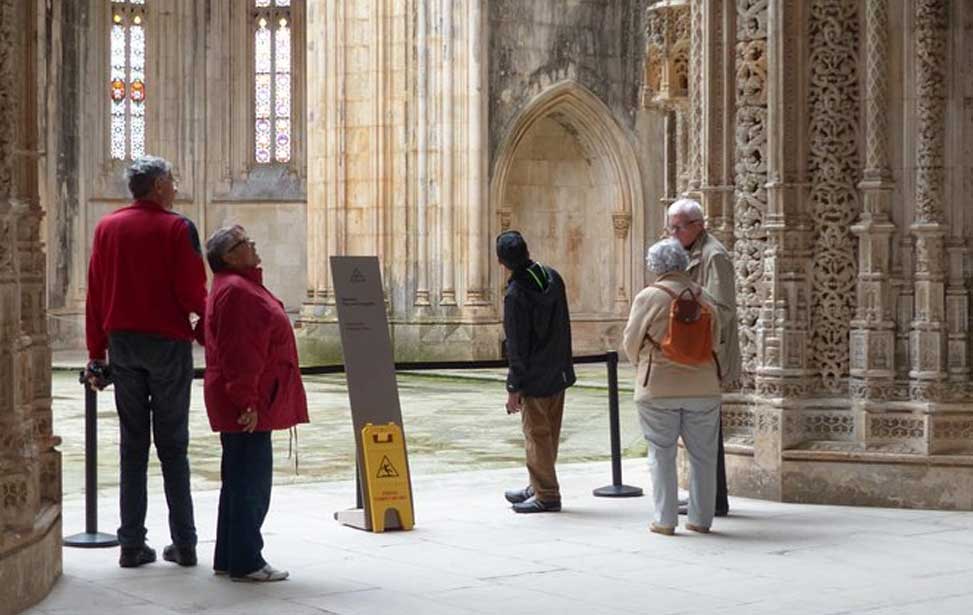
The Knights Templar had a key role in human history and later, the Order of the Christ, based in the Convent of Christ in Tomar, had a major impact on the history of Portugal, from its founding to the Discoveries. You will visit three monuments that are part of the Route of the Portuguese Monasteries World Heritage classified by UNESCO: the Convent of Christ in Tomar, the Monastery of Batalha and the Alcobaça Monastery. Time for lunch and explore the cities that we will visit: Tomar, Batalha and Alcobaça! Pick up and drop-off from Lisbon.
(5) | 8 Hr | ✔ Free Cancellation
Check Availability
With a tumultuous past, this castle stands as a testament to centuries of history, though little of its original form remains. Constructed in the 12th century following the Reconquista, the existing walls replaced a 6th-century Moorish stronghold repeatedly besieged by Christian forces. Positioned strategically atop a hill, the castle's slopes were cultivated by Cistercian monks for grape cultivation, initiating the town's winemaking legacy.
Despite enduring four earthquakes and looting by locals, partial reconstruction efforts in the 1950s preserved seven square turrets and the Moorish watchtower known as the "Torre dos Sete Sobrados." Yet, the castle's primary allure lies in its panoramic vistas, offering breathtaking views of the Monastery and the town below.

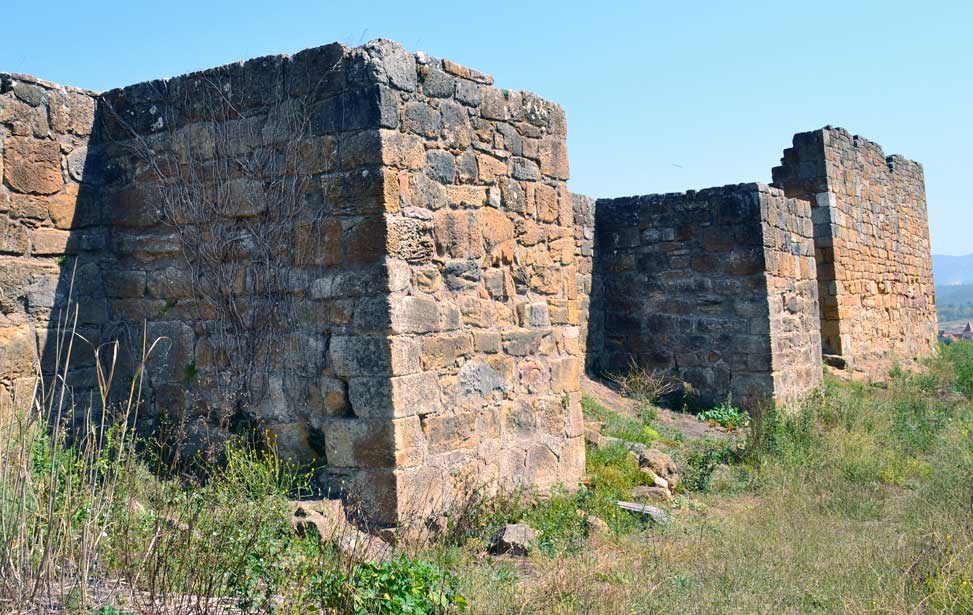
Alcobaça Castle Walls
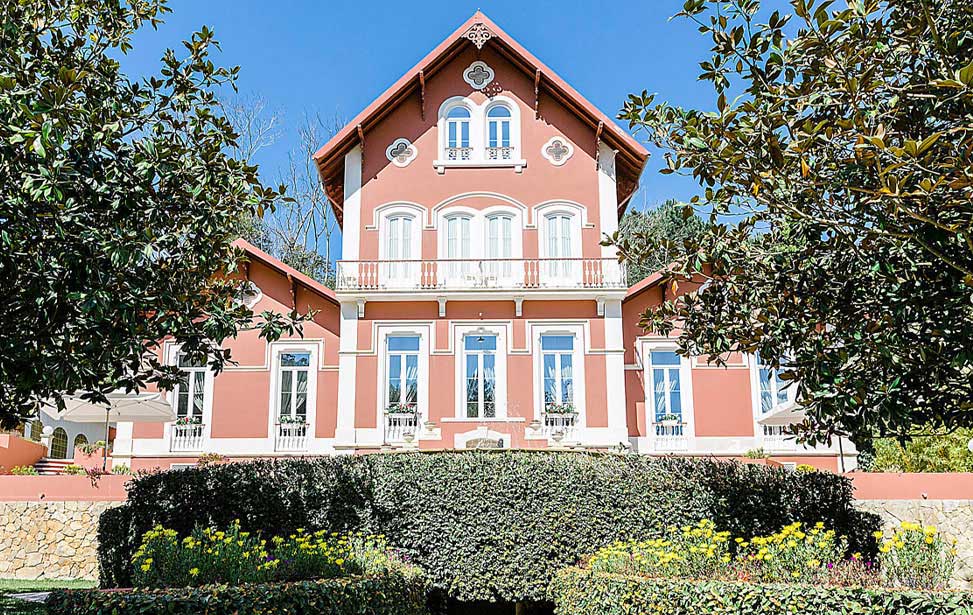
9.5/10 Fabulous (239 verified customer reviews)
Surrounded by lush gardens only 200 yards from the Alcobaça Monastery, this elegant boutique hotel is housed within a historic mansion. It features a Spa and Wellness Centre and free Wi-Fi in public areas. Rooms at the Chalet Fonte Nova have parquet floors and elegant furnishings. They include floor-to-ceiling windows and come equipped with air conditioning, cable TV, and a private bathroom with hand-painted tiles.
In the morning, the hotel serves a buffet breakfast with fresh fruit and homemade cakes. There is also a bar in the basement that serves regional wine and has billiards and board games. Guests can enjoy a relaxing massage, or take a walk through the gardens and visit the koi pond. A car hire service is also available for guests. Free private parking is possible on site.
8 Rua da Fonte Nova, 2460 - 042 Alcobaça, Portugal. | 39º 32" 44.8' N | 08º 59" 07.4' W
Check Availability
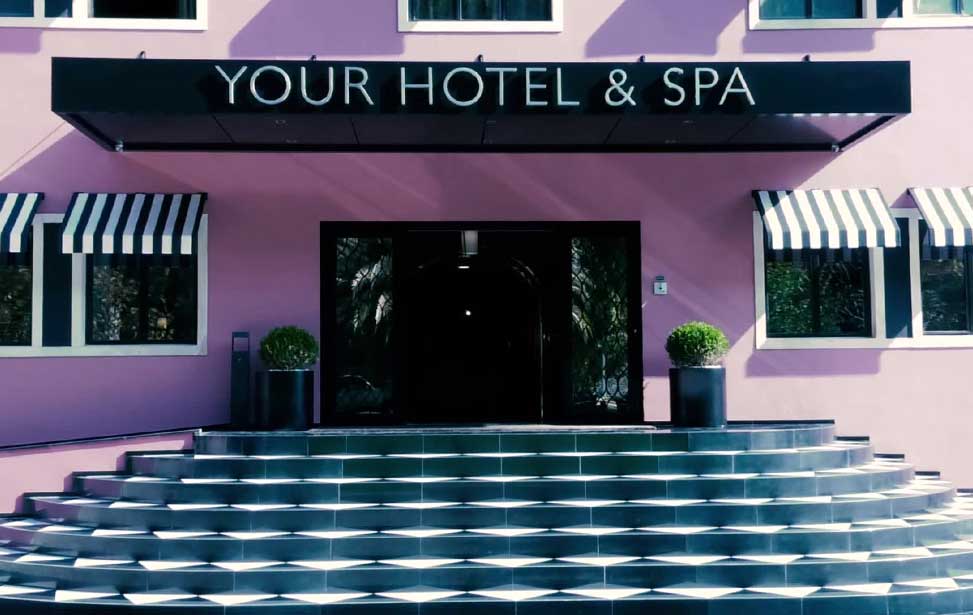
8.1/10 Very Good (1,708 verified customer reviews)
Set in a privileged spot among natural surroundings, Your Hotel & Spa is located 2.8 miles from the historical town of Alcobaça. It offers modern accommodation, a seasonal semi-Olympic-sized outdoor swimming pool, extensive spa facilities a short drive from Nazaré Beach. The accommodation at Your Hotel & Spa Alcobaça is decorated with modern-style furnishings and are air-conditioned. Each one overlooks the gardens, the outdoor pool, or the golf course.
International cuisine and specialities from Portugal's Estremadura Region are served at the hotel's restaurant. Guests can also enjoy drinks and refreshments until late, thanks to the in house bar. Complimentary leisure facilities include an outdoor swimming pool, WiFi access, charging for electrical vehicles and private parking. Bike rental is also available on site. A variety of health treatments are available at an extra charge, including hydrotherapy and massages.
8 Rua da Fonte Nova, 2460 - 042 Alcobaça, Portugal. | 39º 31" 08.5' N | 08º 56" 59.9' W
Check Availability
The National Wine Museum occupies a former winery established by José Raposo de Magalhães, a pioneer in Alcobaça's winemaking legacy. Originally part of the Monastery's holdings, Magalhães transformed the winery with modern grape cultivation methods and innovative wine production techniques, elevating the region's reputation and prosperity through its exceptional wines, renowned both locally and internationally. Amid the phylloxera outbreak, Magalhães revolutionised Alcobaça's vineyards by introducing grafts from France.
Portugal's premier wine institution, the National Wine Museum, boasts a collection of over 8,500 artifacts celebrating oenology and related trades. Visitors can explore an array of exhibits showcasing portable presses, historic wine labels, barrels, bottles, farming implements, and copper stills sourced from across the country. A captivating tour of the cellars and distillery awaits, culminating in a delightful wine tasting experience.
Tuesday - Friday: 09h00 - 11h30/14h00 - 17h00, Weekends: 10h00 - 12h30/13h30 - 16h00,
Adult: €4.00, Concessionary Disabled, Student, Youth card & OAP: €2.50, Child under 12: FREE
Contact Details
Rua de Leiria Olival Fechado, Alcobaça, Portugal.
39° 33' 08.0"N | 08° 58' 38.9"W | +351 262 582 750 | museus@cm-alcobaca.pt
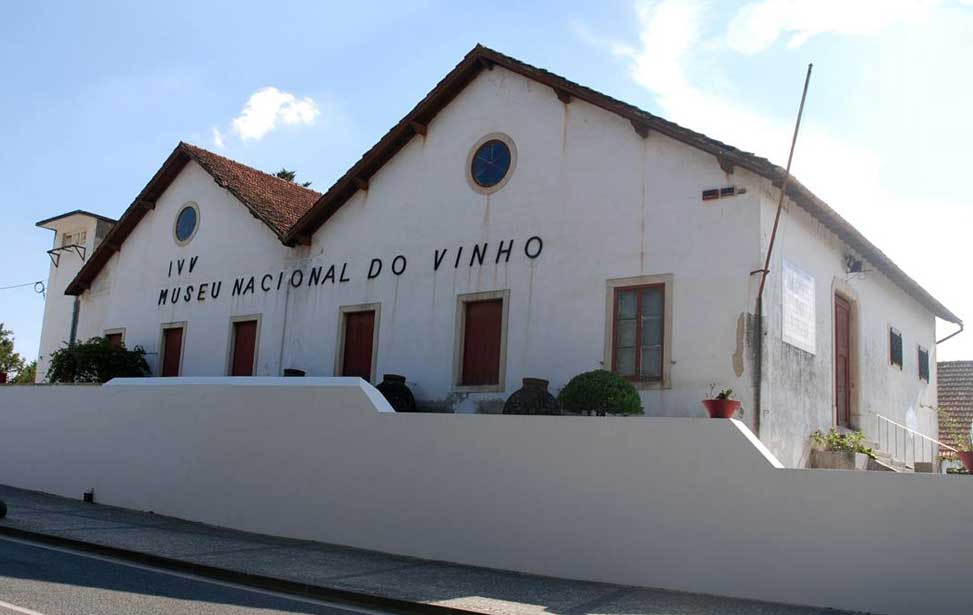
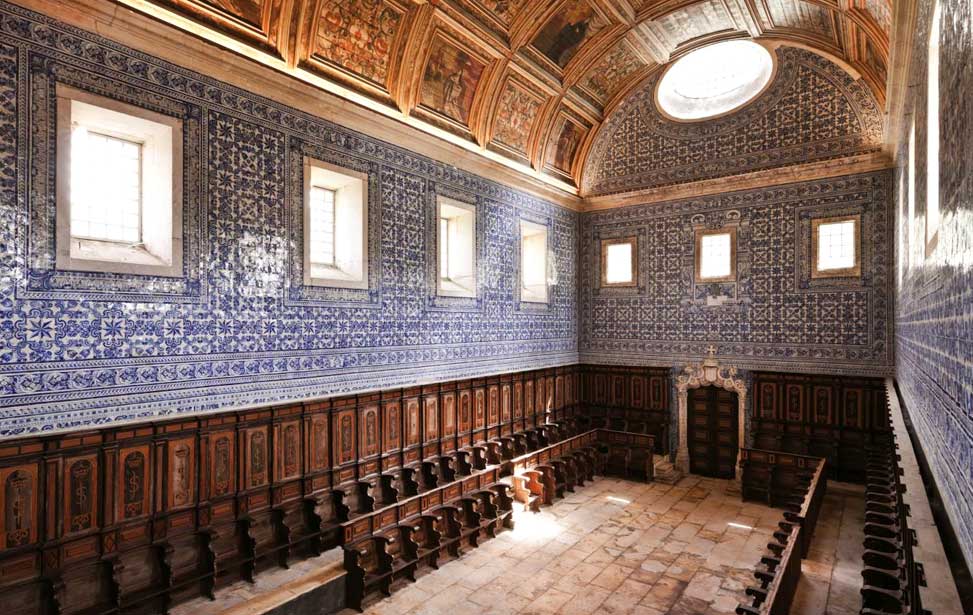
Monastery of Santa Maria Coz
Near Alcobaça lies the Monastery of Santa Maria Cós, one of Portugal's largest Cistercian nunneries. Despite its weathered exterior, this monastery brims with historical and cultural significance. Founded in the 13th century by the Abbot of Alcobaça, it stands as a monumental complex in the region, serving as the primary monastery for Cistercian nuns. Originally established in the 12th century to accommodate widows seeking a monastic life, the monastery witnessed expansions between 1558 and 1670, solidifying its prominence.
Inside, visitors are greeted by an exquisite early Portuguese Baroque décor, featuring intricately carved wood ceilings, 17th and 18th-century azulejo tiles, and opulent gilded altars. Ten azulejo tile panels vividly narrate the life of Saint Bernardo de Claraval (Clairvaux), a pivotal figure in the Cistercian order. A preserved gilded screen once segregated the cloistered nuns from the outside world.
Recognised as a Building of Public Interest in 1946, the monastery has undergone extensive restoration, preserving its rich heritage for generations to come.
Tuesday - Saturday: 09h30 - 12h30/14h00 - 18h00, Sunday: 14h00 - 18h00, Monday: CLOSED.
Entrance: FREE
Contact Details
6 Rua de Santa Rita 2460 Coz, Alcobaça, Portugal.
39° 35' 54.3"N | 08° 57' 20.5"W | +351 262 582 750 | juntafcoz@mail.telepac.pt
An excellent dining experience either for lunch or dinner. From appetisers through to dessert, the Portuguese cuisine here is constantly superbly cooked with a modern twist and well presented. The portions are as generous as the smiles from the staff. Located just out of town in Bemposta high up on the hill overlooking Alcobaça, eating at O Cabeço is a feast for eyes too. The decor is vibrant and modern yet well thought out. The atmosphere is always friendly and welcoming. Prices are very reasonable considering the fine dining experience. Highlights on the menu are the Tuna, Octopus Cataplana, and house style Iberian pork. If you have room for dessert then you will be spoiled once more for choice. O Cabeço has become very popular, so to avoid disappointment it's best to call and make a reservation.
Tuesday - Saturday: 12h30 - 14h00/19h30 - 22h00, Sunday & Monday: CLOSED
65 Rua Dona Elvina Machado, Alcobaça 2460-521, Portugal |
39º 33' 52.4" N | 08º 58' 45.9" W
+351 914 500 202 | ocabeco@gmail.com |
Facebook
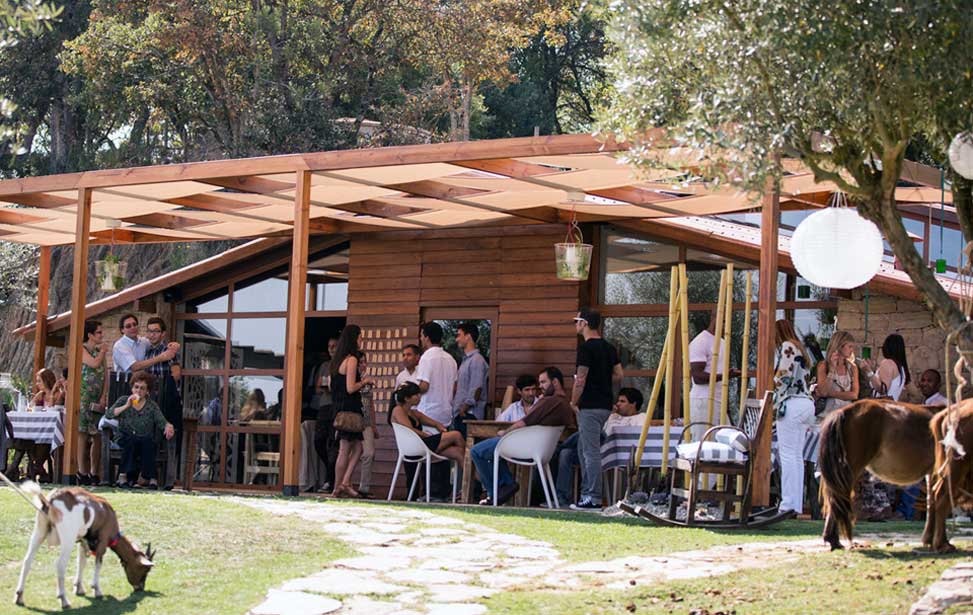
Tucked away in a lane away from the main square and crowds is this great little restaurant. This is the restaurant the locals know as the place to go. The service is typically warm and friendly and portions are very generous. Meals start when a waiter brings a selection of appetisers for you to choose from, at a small fixed price per head. Main courses are local fare cooked to perfection, look out for their Açorda dishes.
Daily: 12h00 - 15h00/19h00 - 23h00
27 Rua Doutor Maur Cocheril, Alcobaca 2460-032, Portugal
39º 39' 33.8" N | 08º 49' 28.3" W
+351 262 582 295 | restaurante.antoniopadeiro@gmail.com |
Facebook
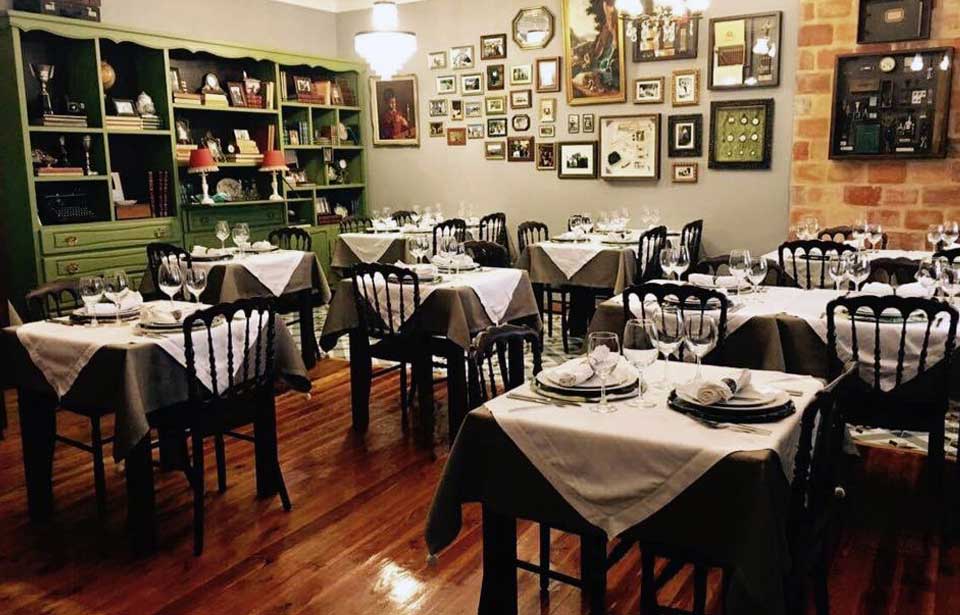
That ol' gourmet burger craze kicked off in Portugal a few years ago and the Portuguese do it very well. This burger bar is ideal if you want something quick, cheap, cheerful yet tasty. Casual as you like with great friendly staff. Their choice of homemade burgers includes vegetarian and vegan options. Food is served over two floors as well as on the outside seating. There are other tempting things on the menu such as soups, salads and devilish desserts.
Daily: 12h00 - 15h00/18h00 - 23h00
49 Rua Frei António Brandão, 2460-047 Alcobaça, Portugal
39º 32' 50.7" N | 08º 58' 55.7" W
+351 262 582 295 |
Facebook
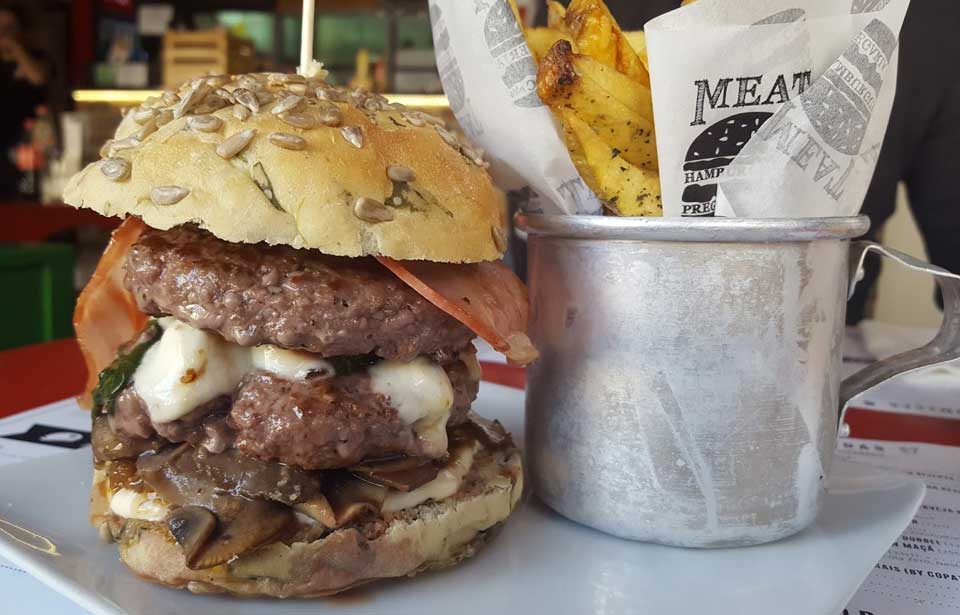
| Alcobaça is 72 miles (116km) North of Lisbon Portela Airport Website GET A GREAT DEAL ON FLIGHTS:
|
|
| To drive to the Monastery of Alcobaça by motorway: from Lisbon or Leira take the A8, exit Alcobaça/Nazaré/Valado dos Frades. Then take the national route EN 8-5 to Alcobaça. 
|
|
|
Take the urban train service (comboios urbanos) to Lisbon's central train station Rossio. |
|
| Rede Expressos run regular services to Alcobaça from Lisbon Sete Rios coach station and takes about two hours.
Website |